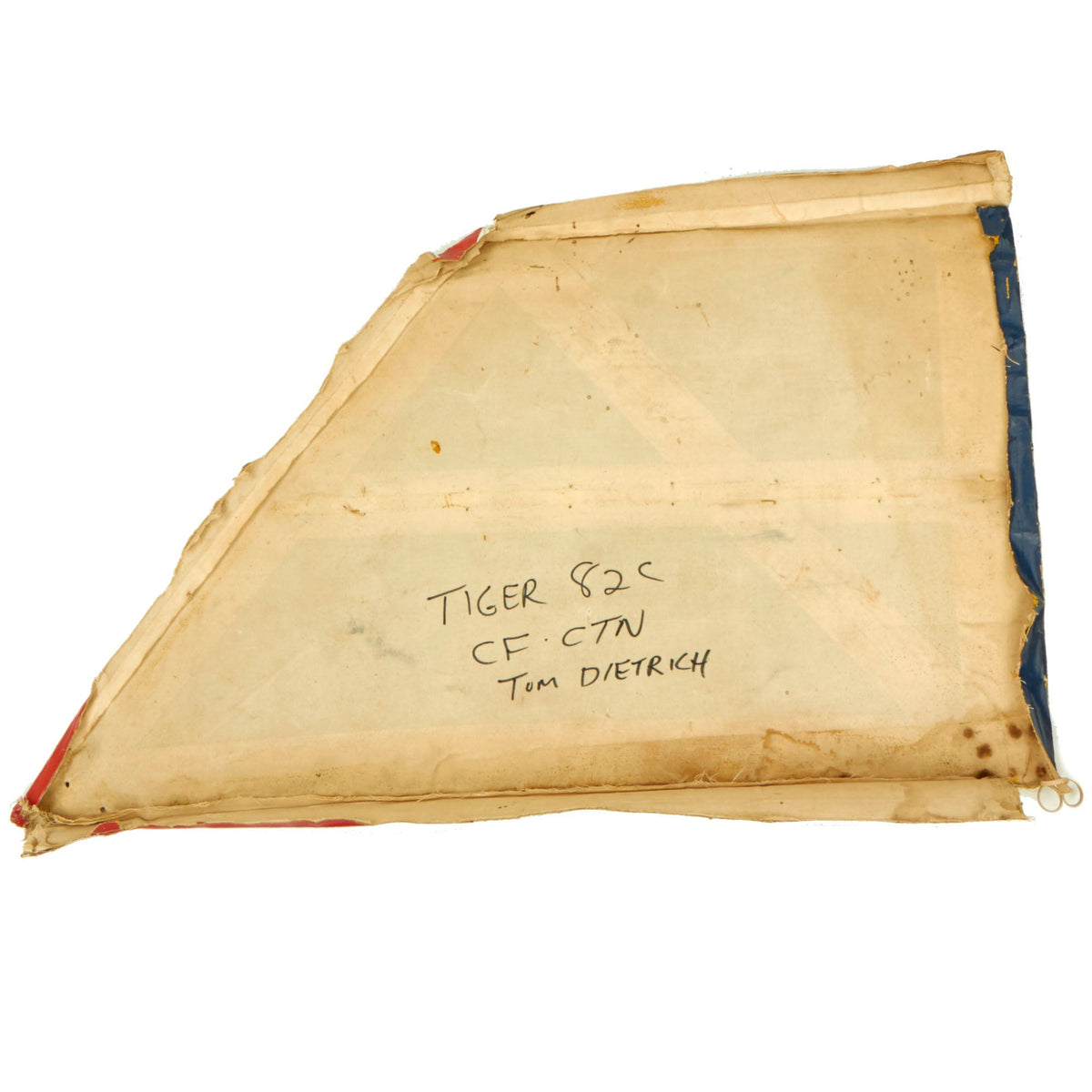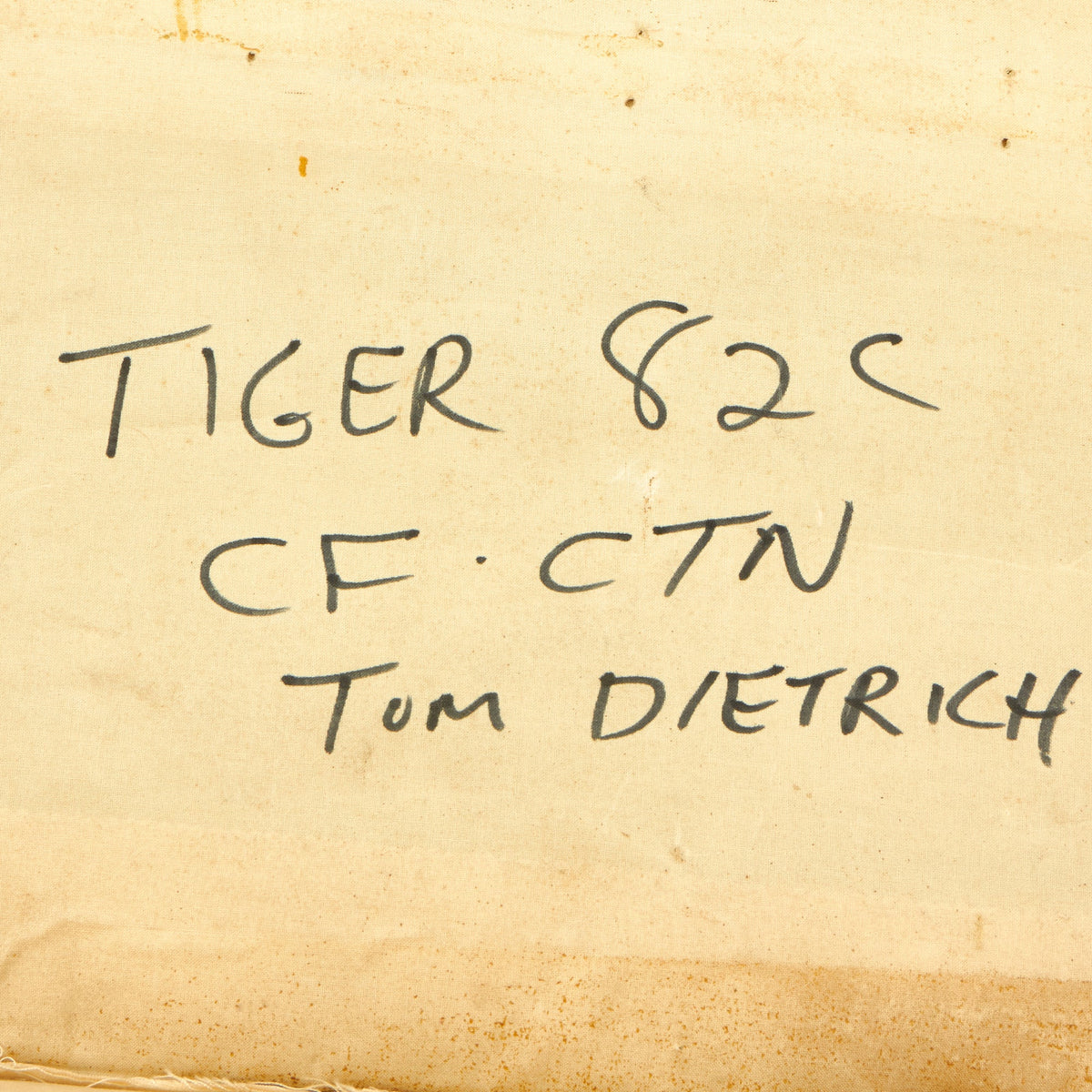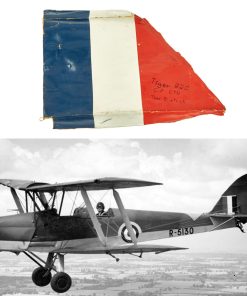Original British WWII de Havilland DH.82 Tiger Moth Vertical Stabilizer Fin Aircraft Skin – 30” x 21” Original Items
$ 750,00 $ 225,00
Original Item: Only One Available. Now this is a lovely item that would be perfect for a Royal Air Force display! This 30” x 21” piece of aircraft skin is from the stabilizer fin of a de Havilland DH.82 Tiger Moth, which was made identifiable on the present writing. The de Havilland DH.82 Tiger Moth is a 1930s British biplane designed by Geoffrey de Havilland and built by the de Havilland Aircraft Company. It was operated by the Royal Air Force (RAF) and other operators as a primary trainer aircraft. In addition to the type’s principal use for ab initio training, the Second World War had RAF Tiger Moths operating in other capacities, including maritime surveillance and defensive anti-invasion preparations; some aircraft were even outfitted to function as armed light bombers.
The skin piece is in good condition but does have cracking present in the paint, other than that it displays very well.
A lovely example ready for further research and display.
The RAF ordered 35 dual-control Tiger Moth Is, which had the company designation DH.82. A subsequent order was placed for 50 aircraft powered by the de Havilland Gipsy Major I engine (130 hp) which was the DH.82A or to the RAF Tiger Moth II. The Tiger Moth entered service at the RAF Central Flying School in February 1932. During the prewar years, increasing numbers of Tiger Moths were procured for the RAF and by overseas customers; by 1939, nearly 40 flying schools operating the type had been established, nine of which operated civilian-register models, as well.
From 1937 onwards, the Tiger Moth was made available to general flying clubs, production having been previously occupied by military customers. The type was used to replace older aircraft in the civilian trainer capacity, such as the older de Havilland Cirrus Moth and Gipsy Moth. By the start of the Second World War, the RAF had around 500 Tiger Moths in service. In addition, nearly all civilian-operated Tiger Moths throughout the Commonwealth were quickly impressed into their respective air forces to meet the wartime demand for trainer aircraft.
Fast Shipping with Professional Packaging
Thanks to our longstanding association with UPS FedEx DHL, and other major international carriers, we are able to provide a range of shipping options. Our warehouse staff is expertly trained and will wrap your products according to our exact and precise specifications. Prior to shipping, your goods will be thoroughly examined and securely secured. We ship to thousands clients each day across multiple countries. This shows how we're dedicated to be the largest retailer on the internet. Warehouses and distribution centres can be located throughout Europe as well as the USA.
Note: Orders with more than one item will be assigned a processing date depending on the item.
Before shipping before shipping, we'll conduct a thorough inspection of the items you have ordered. Today, the majority of orders will be delivered within 48 hours. The delivery time will be between 3-7 days.
Returns
The stock is dynamic and we cannot completely manage it because multiple stakeholders are involved, including our factory and warehouse. So the actual stock may alter at any time. It's possible that you may not receive your order once the order has been made.
Our policy is valid for a period of 30 days. If you don't receive the product within 30 days, we are not able to issue a refund or an exchange.
You can only return an item if it is unused and in the same state as the day you received it. You must have the item in its original packaging.
Related products
Uncategorized
Uncategorized
Uncategorized
Uncategorized
Uncategorized
Uncategorized
Uncategorized
Uncategorized
Uncategorized
Uncategorized
Uncategorized
Uncategorized
Uncategorized
Angolan Rebel 1970s era 60mm Inert Display Mortar from Angolan Civil War Original Items
Uncategorized
Band of Brothers ORIGINAL GERMAN WWII Le. F.H. 18 10.5cm ARTILLERY PIECE Original Items
Uncategorized













































































